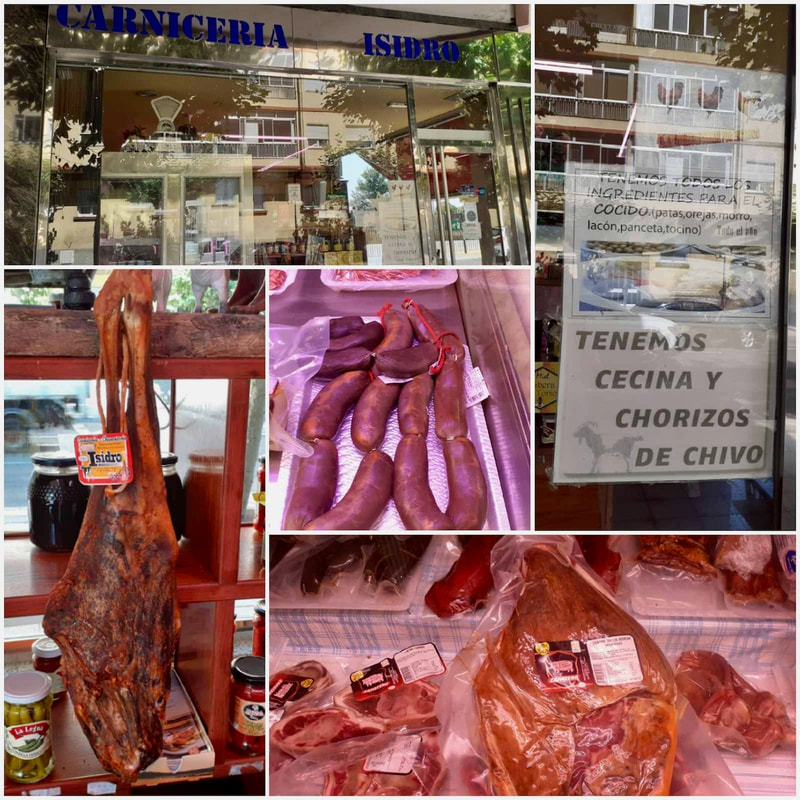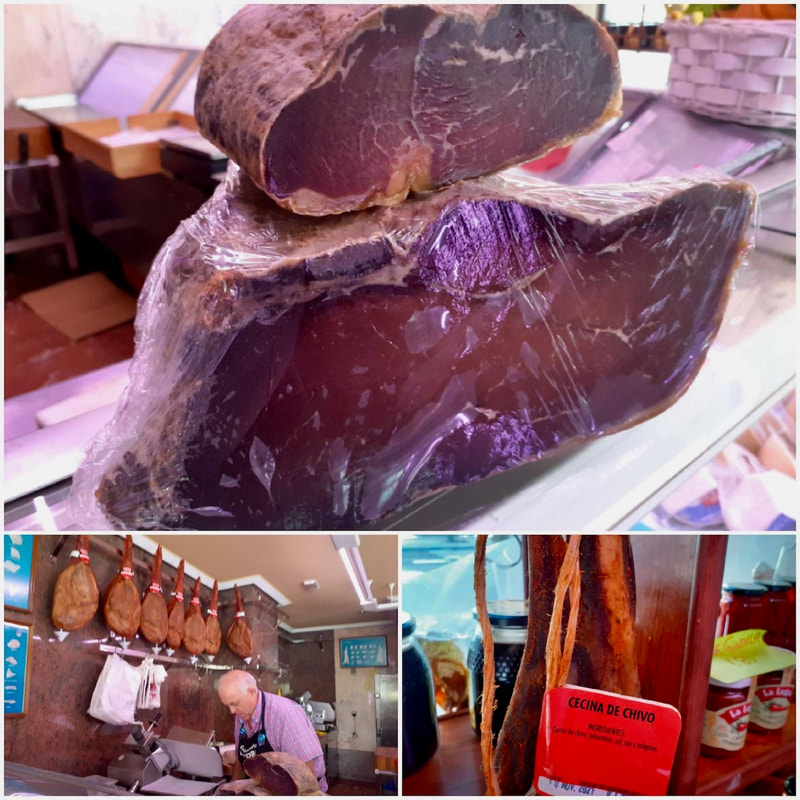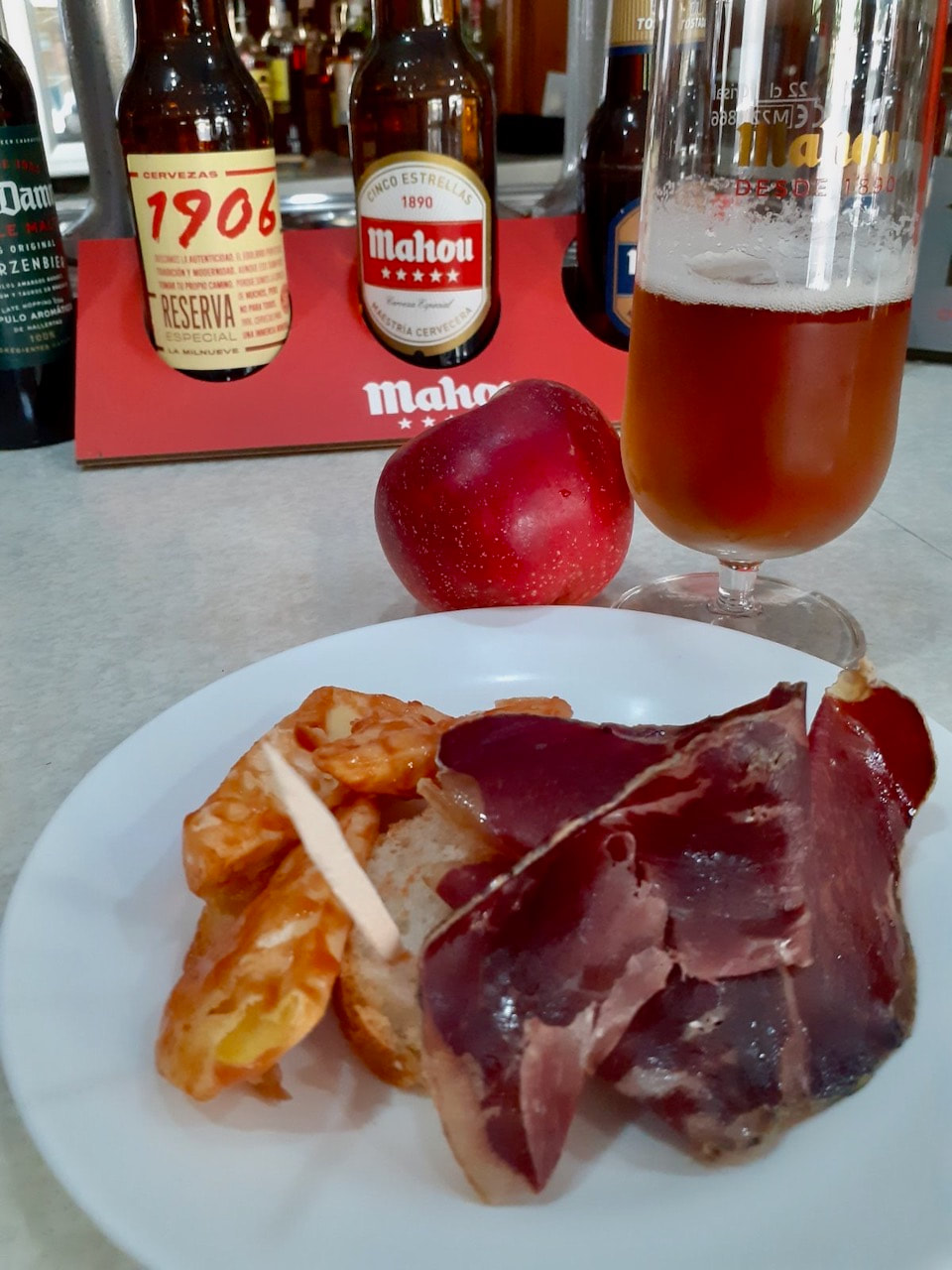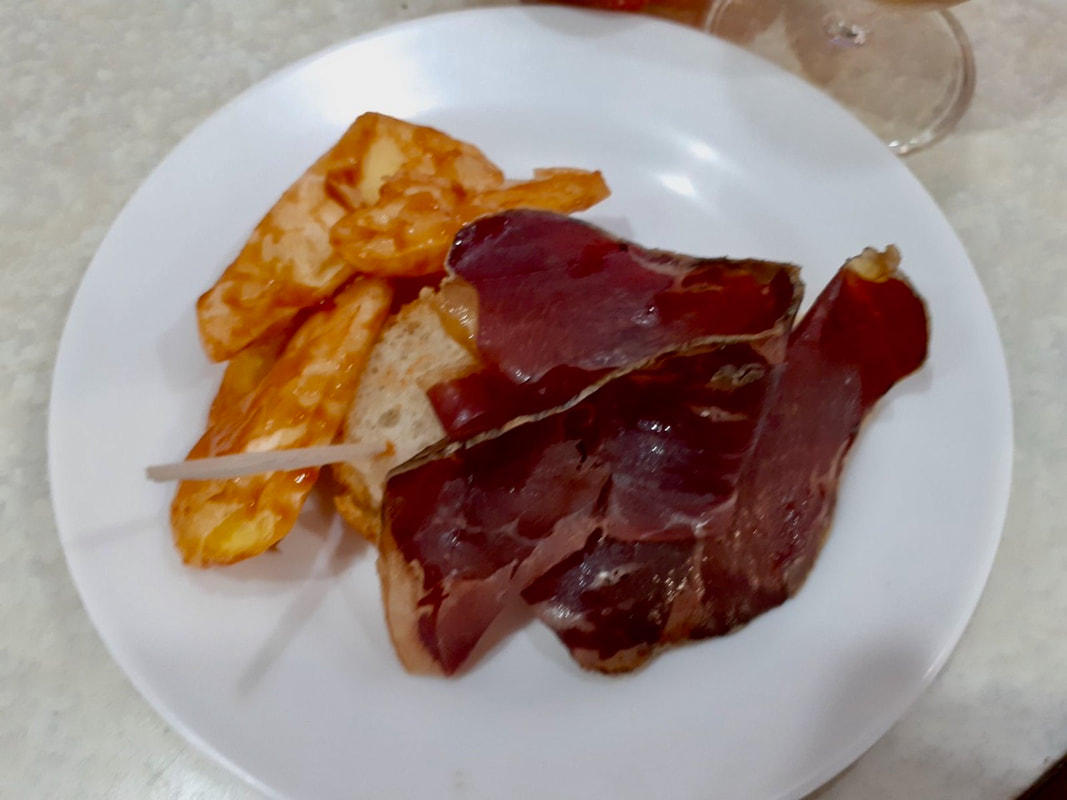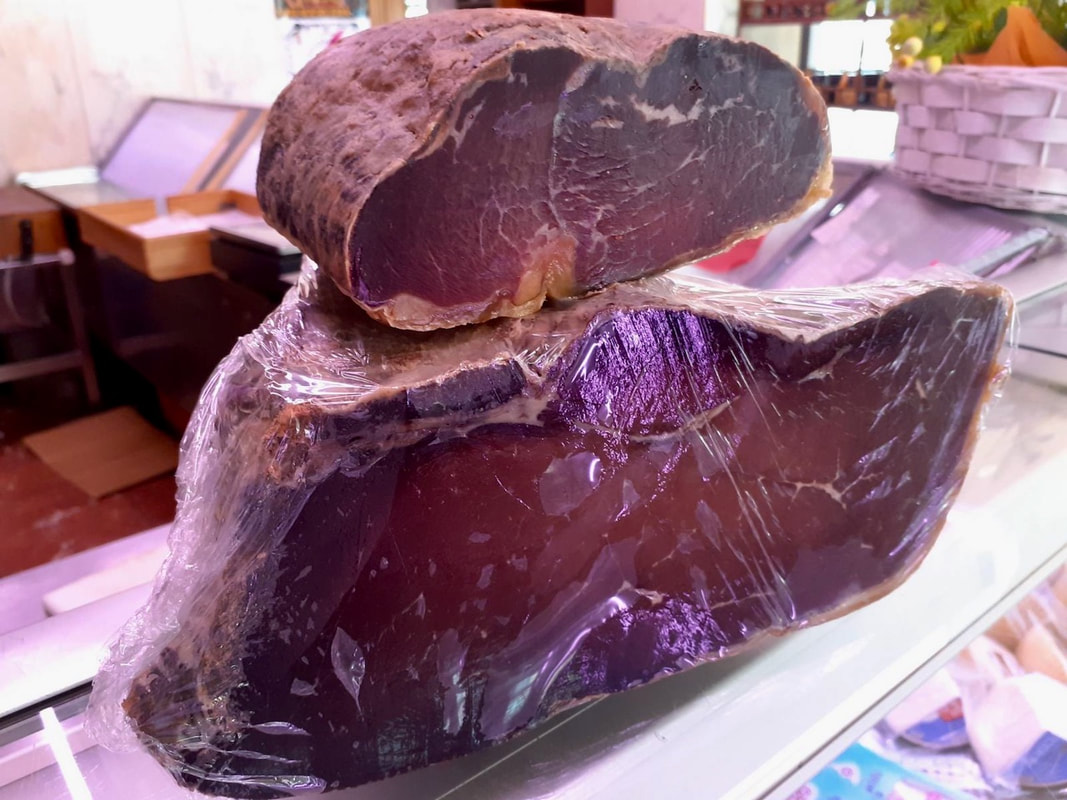In Search of the Cecina de León
by Sylvia Jopillo, r.a.
There is no lack of incredible gastronomy in Spain. This country offers surprising treats in food and drinks. In all its incarnations, the glorious jamón (or ham) is found all over the country, and there is something more than the Jamón Serrano or Iberico to entice the palate.
Found in León, the province's capital with the same name is a variety of ham known as Cecina. Made from the hind legs of beef (although there is also Cecina de Chivo made from goat's meat), the Cecina of León has a protected designation of origin (PGI) that recognizes its uniqueness and value in Spanish gastronomy.
Intrigued by the Cecina, I took a bus to León, 3 hours away from Madrid. And like Alice in Wonderland, I tracked down the Cecina in León's ordinary city streets and not in its famous gourmet shops and restaurant rows.
The Avenida de Mariano Andrés is a ubiquitous road leading to the city center with its narrow streets shaded by trimmed trees and brick buildings housing families and business establishments.
It has two parish churches within 300 meters, meat shops every 20 meters, bakeries, and fruit shops at close intervals! Of course, café bars and Terrazas dotted the avenue where the locals meet for breakfast or drinks with friends and neighbors.
It has two parish churches within 300 meters, meat shops every 20 meters, bakeries, and fruit shops at close intervals! Of course, café bars and Terrazas dotted the avenue where the locals meet for breakfast or drinks with friends and neighbors.
While searching the road, I spotted the Carniceria Isidro, attracted by its glass windows. The meat shop is spotless, with bottled spices, cheeses, preserved anchovies, a variety of sausages, and hams hanging from the rafter. Señor Isidro, the owner, is garbed in an apron and manning the counter.
I asked for Cecina, and the proprietor pulled out a massive chunk of dark dried meat, different from the usual jamón Serrano or Iberico! He sliced two thin pieces when I asked to buy some to taste. The Cecina smells sweet and has a brilliant dark color, similar to the Bresaola in Northern Italy.
As I questioned him about the Cecina, he asked to be excused and returned with two glasses of cold beers, crusty bread, and patatas bravas from the nearby café bar. Setting the drinks and bread on the tiny table inside the shop, he sat down to answer all my questions!
I nibbled on my Cecina and found it surprisingly not salty with a pleasant smoky taste and exquisitely sweet. It goes so well on a slice of crusty bread or eaten alone!
I nibbled on my Cecina and found it surprisingly not salty with a pleasant smoky taste and exquisitely sweet. It goes so well on a slice of crusty bread or eaten alone!
Señor Isidro belongs to a family of Leónesa farmers. They engaged in making Cecina and other embutidos (cold meats) using various meats from their livestock. He learned the trade from his grandparents and inherited the meat shop from his father.
To prepare the Cecina, they splashed with water the fresh hind leg of beef, hanged to dry, then copiously salted and left to cure for a month.
After this, they rewashed it to remove the excess salt crust and then wood-smoked it in a smokehouse for another month. This process cooks the ham, develops its smoky flavor, and aids in preserving the meat. The ham is now ready for curing and storing in a sealed smokehouse.
This process lasts 8 to 10 months before Cecina is ready for the table.
To prepare the Cecina, they splashed with water the fresh hind leg of beef, hanged to dry, then copiously salted and left to cure for a month.
After this, they rewashed it to remove the excess salt crust and then wood-smoked it in a smokehouse for another month. This process cooks the ham, develops its smoky flavor, and aids in preserving the meat. The ham is now ready for curing and storing in a sealed smokehouse.
This process lasts 8 to 10 months before Cecina is ready for the table.
The process is long, tedious, and done by age-old artisanal methods! But like all good things, time and effort make it great.
I found the Cecina de León deliciously unforgettable and Señor Isidro so generous and hospitable. No wonder the Cecina de León was more than a trip. It was a profoundly satisfying human experience!
I found the Cecina de León deliciously unforgettable and Señor Isidro so generous and hospitable. No wonder the Cecina de León was more than a trip. It was a profoundly satisfying human experience!
